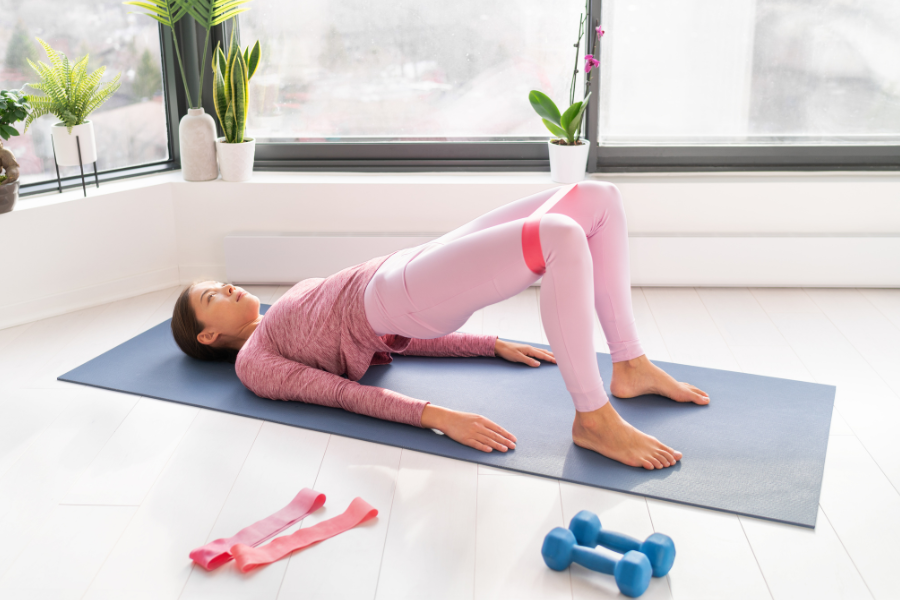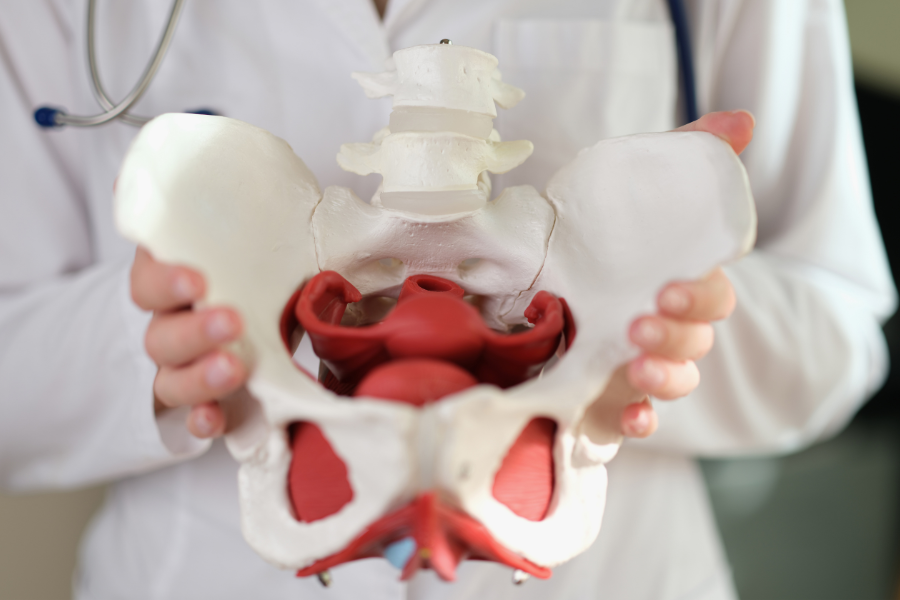
Kegel exercises offer one of the best noninvasive methods to strengthen pelvic muscles and ward off incontinence. When pelvic muscles weaken due to age, pregnancy and delivery, injury, or hormonal changes, many women experience a loss of bladder control that can leave them feeling anxious and self-conscious. In addition to strengthening the pelvic muscles to reduce incontinence in the long term, doing Kegels when you feel stress incontinence coming on after coughing, sneezing, laughing, lifting something heavy, or bending over may prevent leakage in the moment.
WHAT ARE KEGEL EXERCISES?
Kegel exercises were developed as a nonsurgical treatment for urinary incontinence in the 1940s by a gynecologist named Dr. Arnold H. Kegel. These exercises were designed around the findings that strengthening the pelvic floor, vaginal wall, and surrounding supportive systems could prevent urinary incontinence and genital organ prolapse.
While Kegel exercises are generally considered very easy to do, it’s essential to locate the right set of muscles to exercise in order to get results. Experts recommend that women utilize the techniques of pretending they are trying to avoid passing gas or pretending to tighten the vagina around a tampon in order to identify the muscles that need to be engaged during Kegels.
To do a Kegel, contract your pelvic floor muscles for three to five seconds before relaxing for three to five seconds. For best results, repeat the contract-relax cycle 10 times per session. While engaging pelvic muscles, it’s important to keep abdominal, leg, and buttocks muscles relaxed. The pelvis should not be visibly moving during Kegel routines.
BENEFITS OF STRONG PELVIC FLOOR MUSCLES
Kegel muscles help to strengthen the muscles that support the bladder, uterus, small intestine, and rectum. In addition to preventing incontinence, this type of pelvic floor muscle training can also improve quality of life.
Improved Bladder Control
Kegel exercises are ideal for people struggling with something called stress incontinence. Stress incontinence occurs when a few drops of urine leak as a result of coughing, laughing, sneezing, or bending to stretch or lift heavy objects. Kegels can also help to reduce the strong, sudden urge to urinate called urge incontinence that can also result in small urine leaks.
Better Sexual Function
Using Kegel exercises to strengthen the pelvic floor muscles can lead to improved sexual function and greater sexual satisfaction. For women, stronger pelvic floor muscles can improve sexual arousal and increase orgasm intensity. In addition, Kegels also increase blood flow to the pelvic area to boost overall arousal and sensitivity.
Faster Postpartum Recovery
After getting clearance from your doctor, beginning Kegel exercises a few days or weeks following vaginal or C-section delivery can help to speed up recovery. During pregnancy, a combination of the increased weight of a growing baby, hormonal changes that soften pelvic ligaments, and an expanding uterus will generally weaken the pelvic muscles. Kegel exercises can help to strengthen muscles that have stretched or become weak during pregnancy and delivery.
Better Bowel Control
Kegels can help with improving bowel control and stopping fecal incontinence. By contracting and relaxing sphincter muscles, Kegels can make it easier to hold in stool and gas. In addition, strengthening pelvic floor muscles provides better support for the rectum.
Related: When Do You Need Vaginal Rejuvenation?

Pelvic Floor Muscles
FASTER ALTERNATIVES TO KEGEL EXERCISES
Kegel results can vary depending on a person’s muscle strength, how consistent they are with exercises, and the severity of the pelvic floor damage. While Kegels are considered ideal for minor incontinence, they may not work as effectively or quickly enough to produce the results someone suffering with more extreme incontinence or muscle weakness would like to achieve. Several surgical and laser procedures are available for more extreme situations.
Vaginoplasty
Vaginoplasty is any surgical procedure used for the construction of the vagina. Vaginoplasty is commonly used to repair pelvic organ prolapse. It can also be used to repair stretching and looseness following childbirth, restore shape and appearance following radiation or other medical treatments, or correct congenital abnormalities affecting the function or appearance of the vagina.
Vaginal Rejuvenation
Vaginal rejuvenation refers to a number of procedures that improve appearance, function, or comfort. In many cases, several rejuvenation procedures are combined. This might include labiaplasty or surgical hood reduction. There are even options for noninvasive vaginal laser rejuvenation. For example, laser treatments that trigger collagen production, radiofrequency (RF) vaginal rejuvenation that uses RF waves to heat and tighten tissue, and platelet-rich plasma (PRP) injections that use platelets from a patient’s own blood to promote tissue healing.
Perineoplasty
Perineoplasty is a surgical procedure that’s commonly used to repair damage done by childbirth or trauma. This procedure repairs and tightens muscles and tissue in the area between the vagina and anus that’s known as the perineum. In addition to restoring the appearance of the perineum, perineoplasty can help to reduce urinary incontinence and restore sexual function.
Are you interested in learning more about Kegel exercises and other options for tightening the pelvic floor? For more than two decades, Dr. Michael Tahery has been a leading obstetrician-gynecologist (OB-GYN) and urogynecologist serving the Los Angeles and Glendale areas. Dr. Tahery offers the latest in surgical and laser procedures. Contact Dr. Tahery’s office for a consultation today.